Stained Glass Museum
(Former Arata Firm・Former Takahashi Warehouse)
The stained glass pieces that are owned by the Stained Glass Museum (Former Takahashi Warehouse) , inside the Otaru Art Base, were crafted in England between the late nineteenth and early twentieth centuries, and were actually part of the window fixtures in churches. In recent years, many of the churches have been torn down due to various circumstances, but these beautiful pieces of art were spared, and through an unusual twist of fate ended up in Japan. Some of the stained glass is inscribed with words and pictures that tell the history from the flourishing reign of Queen Victoria, through the Edwardian Period, and into the era after the First World War.
We hope you will take the time to visit our museum and view the beautiful pieces of art which are displayed under soft lighting.
Otaru Art Base Stained Glass Museum (Former Takahashi Warehouse)
Consultant Masato Shida
Recommended Collection
-
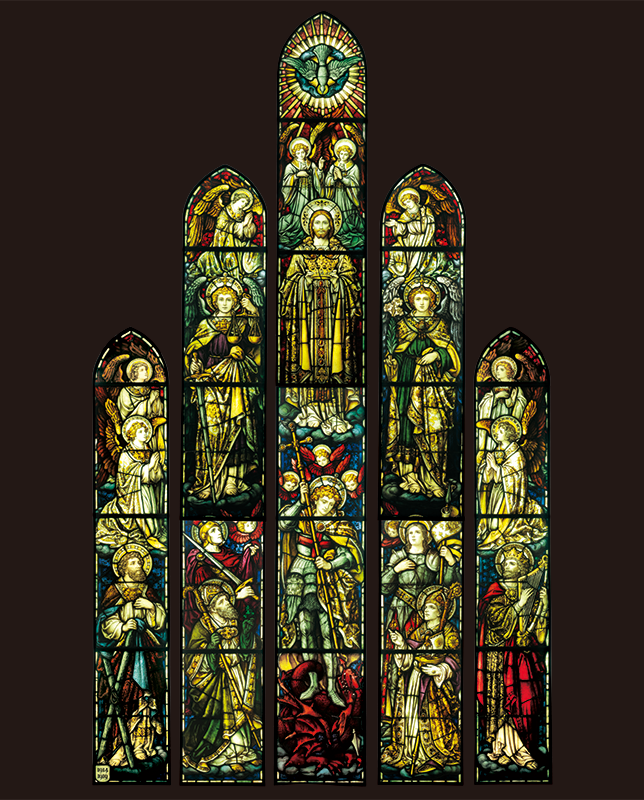
God and The Glory of Great Britain
Around 1919 England
Created in honor of England's victory in the First World War and a tribute to the fallen. The picture portrays St. George being crowned by Jesus Christ, and on either side you can see the guardian saints of Ireland, Scotland and Wales, as well as St. Nicholas and St. Joan of Arc who fought for France.
-
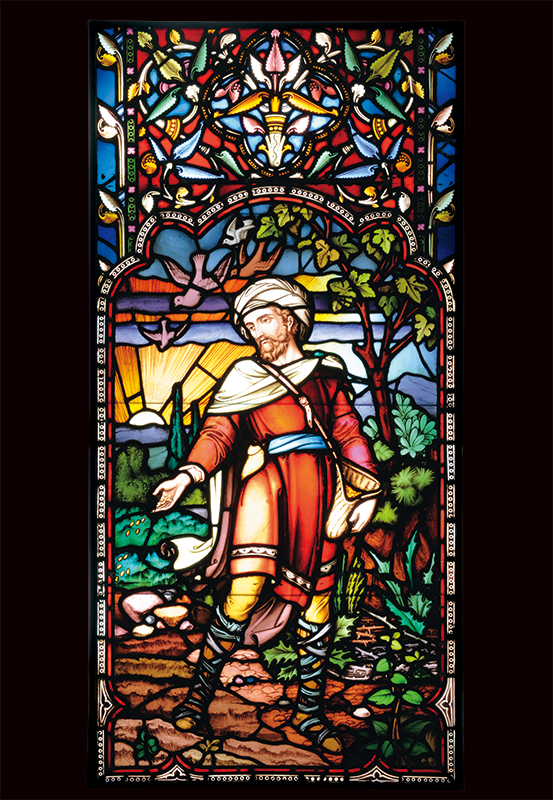
Late Nineteenth Century - Early Twentieth Century England
This piece portrays one of the parables told by Jesus when he was teaching. It is about a sower who sows seeds, some of which are eaten by the birds, some fall on the rocks and are scorched by the sun, some fall among the thorns and sprout but are choked by the weeds. However, he teaches that those who hear the Word and obey God are like seed that fall on good soil, producing a mighty crop.
-
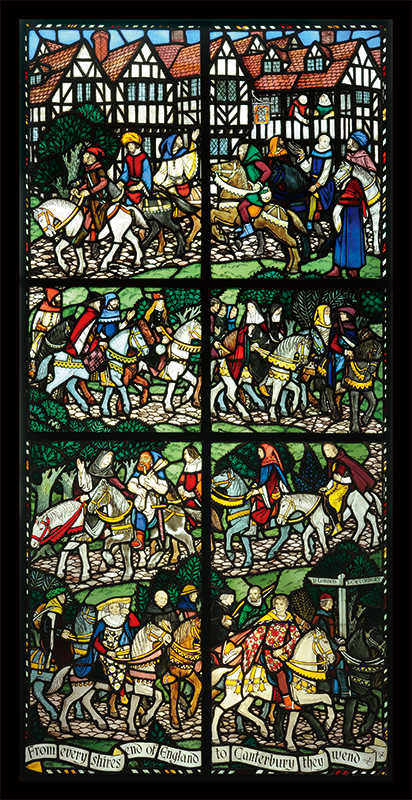
Late Nineteenth Century - Early Twentieth Century England
This piece was created based upon the Canterbury Tales, written by prominent English poet of the fourteenth century, Geoffrey Chaucer. The story is a collection of stories told by a group of pilgrims of various social class, some of which are nobles, clergymen, farmers and craftsmen, on their way to Canterbury Cathedral.
-
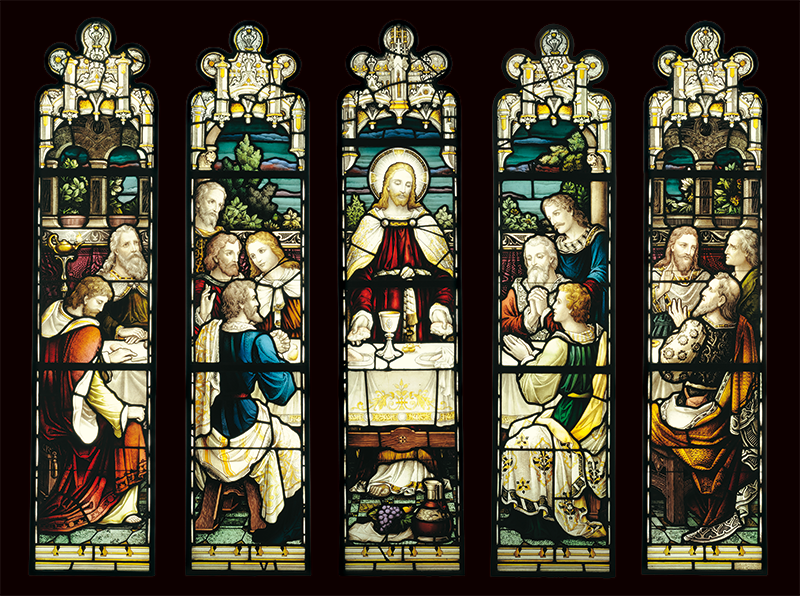
1901 England (Edinburgh)
Alexander Ballantine & Gardiner Studios
This piece portrays the Last Supper, the Passover that Jesus celebrated with his disciples, knowing that Judas, one of the 12 disciples, was getting ready to betray him. Jesus quietly breaks the bread and passes it to his disciples, telling them that there is a traitor among them; the disciples listen with a look of astonishment on their faces. Judas is seen with the 30 pieces of silver he acquired for betraying in Jesus.
-
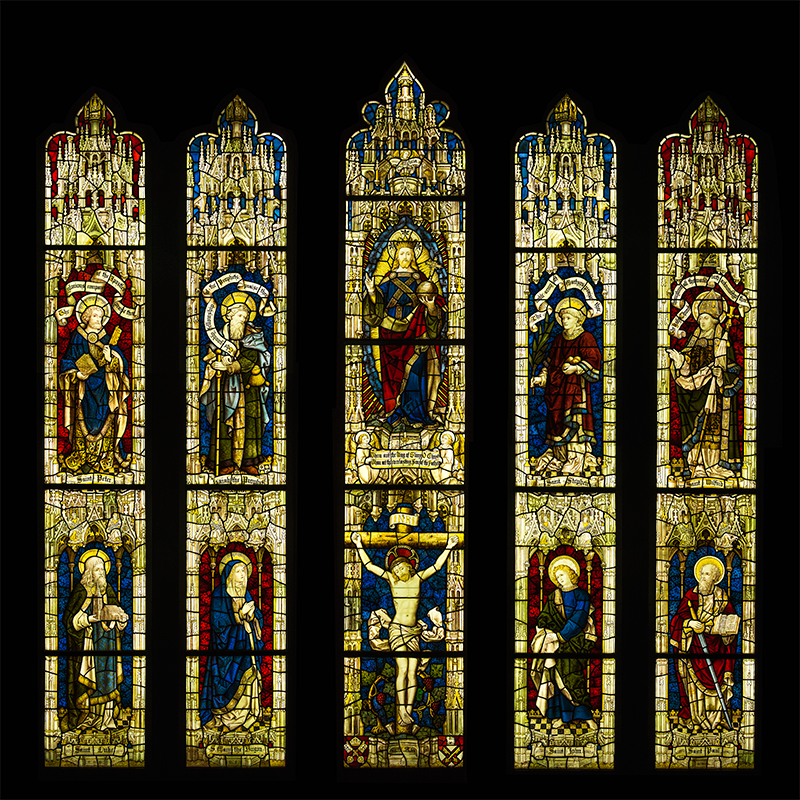
1890 - 1900 England
Comprised of five long windows, the scene portrays the crucifixion of Jesus at the center with Mary, the mother of Jesus, John, his disciple, and other saints who are deeply associated with England. The central window, being the most important to the design, portrays God standing amidst a glowing light and mandora, holding a sphere with the cross, which represents the authority of God and his church.










